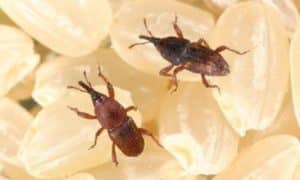
Effective Pantry Pest Solutions to Keep Your Kitchen Safe
Keep your kitchen safe and free from pantry pests with Maximum pest control services. Our effective solutions will eliminate any unwanted critters and protect your home calling Maximum (905) 582-5502.
A well-stocked pantry is a kitchen staple. But finding bugs, droppings or chewed packages? Total nightmare fuel. Don’t let pests turn your baking supplies into their buffet. It’s time to fight back.
From ants to weevils, moths to rodents – pantry pests are resourceful invaders. But you can outsmart them with the right prevention and extermination methods. Identify hot spots, eliminate food sources, and seal off entries. Get smart about storage using airtight containers.
When infestations strike, deploy targeted solutions before they spread. Keep reading for a full guide on protecting your pantry paradise.
Common Types of Kitchen Pests Found
- Ants marching to sugary spills and crumb trails.
- Fruit flies swarming overripe produce and drains.
- Cockroaches lurking in warm, humid crevices.
- Rodents gnawing through packages, leaving droppings.
- Pantry moths laying eggs in grains and flours.
- Silverfish nibbling on starchy foods and paper products.
- House flies circling over odors and grime.
- Spiders spinning webs in cabinets for catching prey.
Recognizing the Signs of Infestation
An infestation can escalate quickly if you don’t catch it early. Stay vigilant and learn to recognize these telltale signs before pests take over.
Webbing signals spider or moth activity in dark corners and crevices. Closely inspect for silky threads and cocoon-like casings. Damaged packaging and gnawed holes are a red flag for rodents rummaging for food. Check for droppings too.
The presence of tiny larvae crawling through grains or seeing discarded casings means insects have invaded. And that unmistakable foul, musty odor? Definite indicator pests made themselves at home and it’s time for serious cleaning.
Natural Methods to Prevent Pantry Pest Infestation
Keeping pests out of your pantry is an ongoing battle, but you can gain the upper hand using simple, natural prevention methods. Avoid harsh chemicals and opt for these eco-friendly alternatives instead.
Air-Tight Storage: The first line of defense? Starve pests of their food sources by storing items like grains, flours, cereals, and more in sealed glass or plastic containers.
Regular Deep Cleaning: Wipe down pantry shelves frequently and vacuum corners to remove crumbs and residue that may attract pests. A clean environment is uninviting for invaders.
Natural Repellents: Certain spices, herbs, and oils have scents that deter many pantry pests. Try tucking bay leaves, cinnamon sticks, or cotton balls soaked in peppermint oil in containers.
Maintaining Coolness and Dryness: Most pantry pests thrive in warm, humid environments. Keep your pantry cool and dry by using a dehumidifier if needed.
With some simple natural techniques, you can make your pantry far less appealing for potential pests to inhabit.
Proper Food Storage Techniques
One of the most effective ways to keep pantry pests at bay is to cut off their access to food sources. Proper storage methods can create an inhospitable environment where insects and rodents can’t survive. Follow these smart practices:
- Use airtight containers made of glass, metal or thick plastic. Transfer dry goods from their original packaging.
- Inspect all items before storing and discard anything that appears compromised or infested.
- Rotate older products to the front and practice first-in-first-out inventory management.
Insecticides for Pantry Pest Management
When natural prevention methods aren’t enough, insecticides may be necessary to eliminate a stubborn pantry pest infestation. However, these potent chemicals require careful handling and targeted application.
Choosing the Right Insecticide
Different pantry pests call for different insecticide formulations. Do your research to select one specifically meant to treat the type of pest you’re dealing with, whether it’s ants, weevils, moths, or rodents. Some are available in milder, residential-grade options.
Using Insecticides Safely
Always read and follow all label instructions to the letter. Take safety precautions like wearing gloves and proper ventilation. Remove all food items and cooking equipment before application. Allow the recommended time before returning items.
Targeted Application
For best results, apply insecticides directly in areas where you’ve spotted pest activity like cracks, crevices, corners, and hotspots. Spot treat entry points too. Avoid widespread spraying which increases exposure risks.
Used judiciously, insecticides can be an effective last resort. But they should never replace an integrated pest management approach emphasizing prevention and environmental controls.
Conclusion
How to Get Rid of Pantry Pest
A pest-free pantry is totally achievable with some diligent efforts. Start by making your kitchen an unwelcome environment – seal up entry points, practice excellent food storage, and maintain cleanliness. Regularly inspect for signs of activity.
If you do spot an infestation, act quickly using targeted methods. Try natural repellents and traps, but don’t hesitate to bring in professional help for severe cases. With an integrated approach of prevention, early detection, and strategic extermination, you can regain control of your pantry paradise. No more sharing snacks with those uninvited guests!





